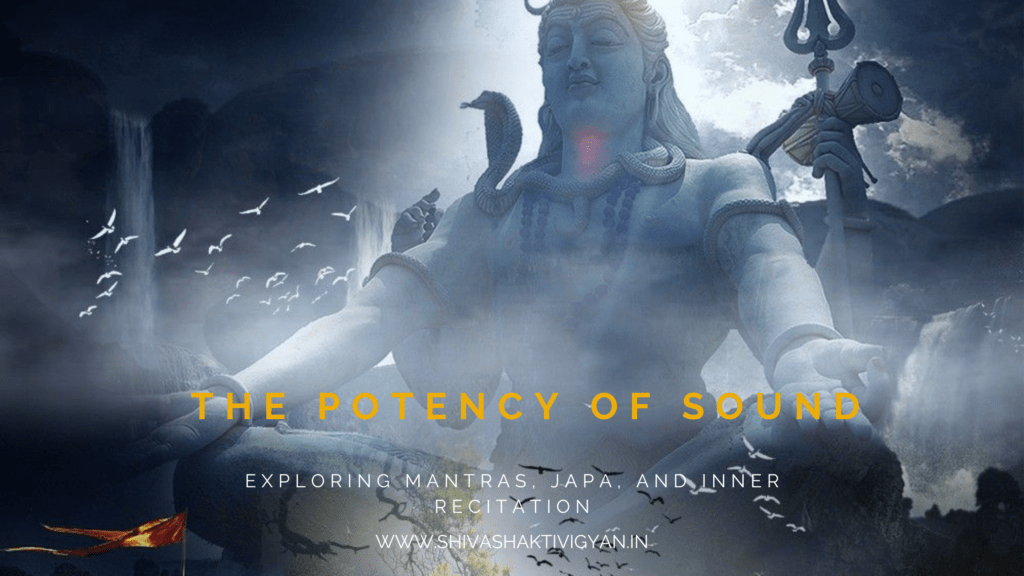
Mantras, sacred utterances with profound spiritual significance, have resonated across cultures and traditions for millennia. Their power lies not just in the words themselves, but in the vibrations they create, influencing the practitioner’s mind, body, and spirit. This article delves into the essence of mantras, explores the diverse types found in various spiritual paths, and examines the practice of japa (mantra repetition) for enhanced effectiveness. It then investigates the potential benefits of silent, internal japa compared to audible recitation.
The Essence of Mantras: Sound as a Bridge to the Divine
The word “mantra” comes from the Sanskrit root “man,” meaning “to think,” and “tra,” meaning “instrument.” Thus, a mantra is a tool for directing the mind. These sacred sounds, syllables, or phrases are believed to possess potent spiritual vibrations that resonate with the universe’s energies.
While some mantras have literal meanings, conveying prayers or invoking deities, others are devoid of specific semantic content. Here, the power lies in the sound itself, believed to create a specific energetic state within the practitioner. The “Om” mantra, for instance, a primordial sound in Hinduism, signifies the ultimate reality. In Tibetan Buddhism, mantras like “Om Mani Padme Hum” are chanted for purification and compassion.
The significance of sound in spiritual traditions is well-documented. Many cultures believe that creation itself emerged from primordial vibrations. Mantras can thus be seen as tools for aligning oneself with these foundational sounds, fostering a sense of connection with the divine.
A Tapestry of Mantras: Exploring Different Traditions
The world of mantras is vast and multifaceted, reflecting the diversity of spiritual paths that utilize them. Here’s a glimpse into some prominent traditions:
- Hinduism: Mantras hold immense importance in Hinduism, used in rituals, meditation, and personal practice. The Vedas, the oldest scriptures, contain numerous mantras, including the revered Gayatri Mantra, dedicated to the divine light.
- Buddhism: Mantras play a vital role in various Buddhist schools. Vajrayana Buddhism, in particular, emphasizes the practice of mantra recitation for its transformative power. The six-syllable “Om Mani Padme Hum” mantra is a popular example.
- Sikhism: The Mool Mantra, the foundational prayer in Sikhism, is considered a powerful mantra, encapsulating the core beliefs of the faith.
- Jainism: Jainism utilizes mantras for spiritual purification and liberation. The “Ṇamokāra Mantra” is a prominent example, seeking forgiveness from all living beings.
- Christianity: While not explicitly called mantras, certain short prayers or phrases repeated in Christian traditions, like the “Ave Maria” or the Jesus Prayer, share some characteristics with mantras.
The specific use and purpose of mantras vary across traditions. However, the underlying principle of harnessing sound for spiritual growth remains a common thread.
The Practice of Japa: Deepening Connection Through Repetition
Japa, the dedicated practice of mantra recitation, is a cornerstone of many spiritual paths. Through focused repetition, the mind is quieted, and attention is drawn inward. This repetitive process can lead to several benefits:
- Concentration: Japa helps anchor the mind in the present moment, reducing distractions and fostering a state of focused awareness.
- Meditation: The rhythmic chanting of mantras can serve as a gateway to meditation, promoting inner stillness and calmness.
- Transformation: The vibrations of the mantra are believed to influence the practitioner’s subtle energy system, leading to a sense of purification and transformation.
- Devotion: Japa can be a powerful tool for cultivating devotion to a specific deity or spiritual ideal.
While japa is often practiced audibly, with chanting or recitation, there’s another dimension worth exploring: silent, internal japa.
The Power of Silence: Exploring Inner Recitation
Traditionally, japa is often practiced aloud, using the voice to create a resonant effect. However, some traditions emphasize the importance of silent, internal japa, the mental recitation of the mantra without vocalization.
Proponents of inner japa argue that it offers several advantages:
- Deeper Concentration: By eliminating the external sound, internal japa allows for a deeper level of concentration, as there are fewer distractions for the mind.
- Accessibility: Silent japa can be practiced anywhere, anytime, regardless of external circumstances.
- Subtlety: The internal sound of the mantra is believed to have a more profound impact on the subtle energy system compared to audible chanting.
While both audible and internal japa have their merits, the most effective method often depends on the individual and their specific goals.
Conclusion: A Symphony of Mind, Body, and Spirit
The world of mantras and japa offers a rich tapestry of spiritual practices. Whether recited aloud or echoed silently within, these potent sounds have the power to transform the mind, body, and spirit.
For those seeking deeper concentration, inner peace, or a connection with the divine, exploring the practice of japa can be a transformative journey. By choosing a mantra that resonates with their beliefs and practicing japa regularly, individuals can embark on a path of self-discovery and spiritual growth.
Ultimately, the effectiveness of japa lies not just in the technique itself, but in the intention and devotion brought to the practice. As the mind surrenders to the rhythm of the mantra, and the body finds stillness, a space for inner transformation opens. In this symphony of sound and silence, the practitioner aligns with a deeper reality, fostering a sense of peace and connection that transcends the limitations of the external world.

Absolute truth about Shiva and Shakti energy and concepts in Vedic texts described here beautifully indepth with in a limited format.
As a guru and shishya concept the work & words suits as a best mentor across available resources I have meet.
Gratitude 🙏
Om 🙏 namah shivaya Om 🙏.
Thank you for your comment Aum Namah Shivay
Love, Light and grace